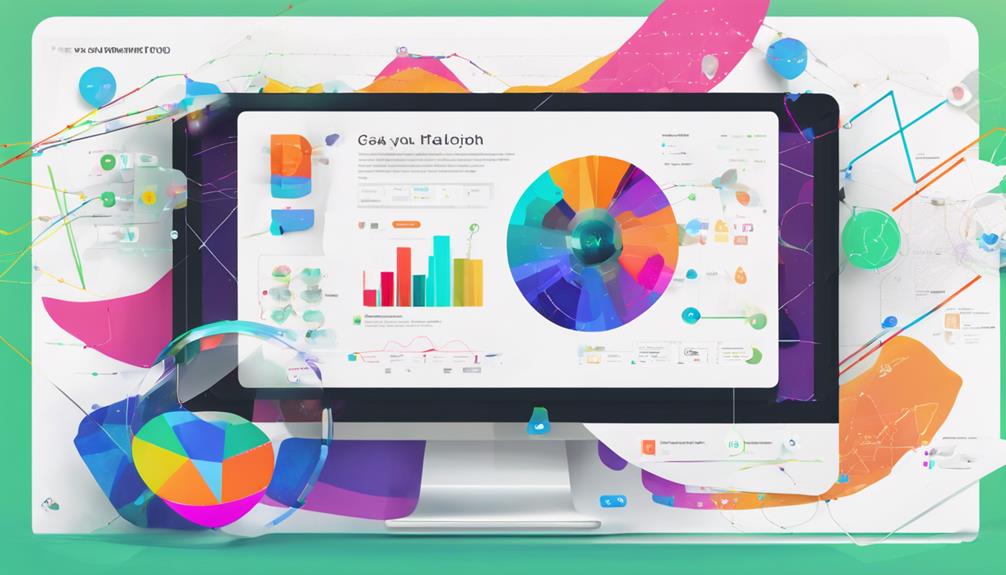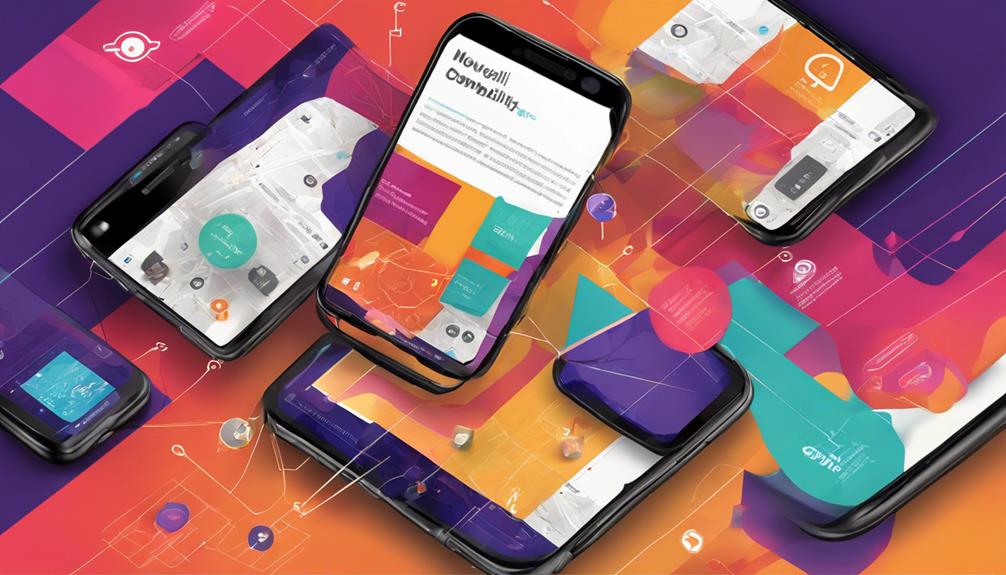When you're aiming to maximize your website's potential, mastering on-page SEO techniques becomes essential. It's not just about stuffing your content with keywords; it's about strategically enhancing elements like meta tags and page load speed to improve visibility and user engagement. You might wonder why these aspects matter so much in the crowded digital space. Well, they don't just affect your search rankings—they influence conversion rates and brand credibility too. Curious how these techniques can transform your online presence and drive growth in ways you hadn't imagined?
Enhance Keyword Targeting
Enhancing keyword targeting is essential for improving your website's search engine ranking and visibility. By focusing on the right keywords, you can attract your target audience and increase organic traffic. Start by conducting thorough keyword research using tools like Google Keyword Planner or SEMrush. Identify high-volume, low-competition keywords relevant to your niche. Long-tail keywords, which are more specific and less competitive, can effectively capture intent-driven traffic.
Once you've identified your target keywords, strategically incorporate them into your website's content. Use them naturally in your titles, headings, and body text. Avoid keyword stuffing, as search engines penalize this practice. Instead, aim for a keyword density of around 1-2% to maintain readability and user engagement.
Optimize your meta tags, including the title tag and meta description, to reflect your primary keywords. This not only helps search engines understand your content but also boosts click-through rates by making your listings more appealing to users. Use data-driven insights from analytics to refine your keyword strategy over time. Track metrics such as organic search traffic, bounce rates, and conversion rates to gauge the effectiveness of your keyword targeting.
Additionally, consider user intent when selecting keywords. Understand whether your audience is seeking information, looking to make a purchase, or comparing options. Tailor your content to meet these needs, ensuring it answers users' queries comprehensively.
Improve Page Load Speed

A fast-loading website can significantly enhance user experience and boost your search engine rankings. Google's algorithms prioritize speed, making page load time a crucial factor for SEO success. You can't afford to overlook this aspect, as 53% of users abandon sites taking over three seconds to load. To optimize page speed, focus on compressing images, leveraging browser caching, and minimizing CSS and JavaScript.
Here's a breakdown to guide your improvements:
| Priority | Task | Impact Estimate |
|---|---|---|
| High | Compress Images | 30% reduction in load time |
| Medium | Leverage Browser Caching | 20% improvement in speed |
| High | Minimize CSS/JS | 25% faster page rendering |
| Medium | Reduce Redirects | 15% decrease in latency |
| Low | Optimize Server Response | 10% quicker delivery |
Compress images by using tools like TinyPNG or JPEG Optimizer. Large images can slow down your site, so make sure you're using the right format and size. Leverage browser caching to store elements locally, cutting down on server requests for returning visitors. Minimize CSS and JavaScript by removing unnecessary code and using tools like Minify.
Reducing redirects is another way to trim load times. Each redirect triggers an additional HTTP request-response cycle, increasing latency. Lastly, optimize server response times by choosing a reliable hosting service and utilizing Content Delivery Networks (CDNs).
Optimize Meta Tags

When it comes to optimizing meta tags, you're directly influencing how search engines and users perceive your page content. Meta tags, specifically title tags and meta descriptions, play a significant role in improving your website's visibility and click-through rates. By crafting compelling, keyword-rich meta tags, you ensure that search engines understand your page's relevance to a user's query, increasing your chances of ranking higher in search results.
Start with the title tag, as it holds the most weight. Keep it under 60 characters to ensure it displays fully in search results. Use primary keywords naturally while maintaining readability. For instance, if you're targeting "best vegan recipes," structure your title like "Best Vegan Recipes for Healthy Living." This approach aligns with both user intent and search engine algorithms.
Next, focus on the meta description. Though it doesn't directly affect rankings, a well-written meta description can significantly boost click-through rates. Aim for a concise 150-160 characters, incorporating long-tail keywords and a clear call to action. For example, "Discover delicious vegan recipes that promote healthy living. Try our easy-to-follow guides today!" This encourages users to click through while reinforcing the page's key content points.
Analyze data from tools like Google Search Console to refine your meta tags further. Monitor metrics such as impressions, clicks, and CTR to identify which tags resonate with your audience and drive traffic.
Regularly update your meta tags to reflect changes in keywords and user behavior, ensuring your content remains relevant and competitive in search engine results pages. By optimizing meta tags strategically, you're setting the foundation for successful on-page SEO.
Boost User Engagement

To boost user engagement, your website's design and content must captivate your audience right from the start. This means using a clean, intuitive layout that guides users seamlessly through your site. The first 15 seconds are crucial; 55% of visitors spend less than this on a page if it doesn't grab their attention. Incorporate high-quality visuals and a compelling headline to decrease bounce rates and encourage users to explore further.
Your content should be relevant and valuable, answering users' queries with precision. Use data-driven insights to tailor your content to your audience's preferences. According to HubSpot, personalized content can boost engagement by up to 42%.
Implementing interactive elements like quizzes, polls, or comment sections can also enhance user experience, making visitors stay longer and increasing their likelihood to return. Integrating internal links strategically can guide users deeper into your site, increasing page views and session duration. According to a study, websites with internal linking structures can see a 40% increase in user engagement.
Make sure your call-to-actions (CTAs) are clear and compelling; a well-placed CTA can increase click-through rates by 200%. Page speed is a critical factor in user engagement. A mere one-second delay in page load time can lead to a 7% reduction in conversions. Optimize images and reduce unnecessary scripts to ensure fast loading times.
Regularly analyze user behavior with tools like Google Analytics to identify areas for improvement. By mastering these on-page SEO techniques, you'll not only boost user engagement but also enhance your site's overall performance.
Increase Mobile Compatibility

Optimizing your website for mobile compatibility is crucial, as over 50% of global web traffic comes from mobile devices. By ensuring your site is mobile-friendly, you not only enhance user experience but also boost your search engine rankings. Google uses mobile-first indexing, meaning it predominantly uses the mobile version of a site for indexing and ranking. So, if your site isn't optimized for mobile, you're likely losing out on valuable traffic and potential conversions.
To effectively increase mobile compatibility, focus on responsive design, fast loading times, and easy navigation. A responsive design ensures your website adapts to various screen sizes, providing an optimal viewing experience. Speed is critical; a delay of just one second can reduce conversions by 7%. Therefore, minimizing image sizes and compressing files can make a significant difference.
Here's a quick overview of key mobile optimization strategies:
| Strategy | Benefit |
|---|---|
| Responsive Design | Adaptability to all devices |
| Fast Loading Times | Higher conversion rates |
| Simplified Navigation | Improved user experience |
Don't overlook the importance of simplified navigation. Mobile users want quick access to information, so streamline your menu and reduce the number of clicks needed to reach essential content.
Conclusion
Mastering on-page SEO techniques is essential for your website's success. Did you know that pages loading in under 2 seconds have a 15% higher conversion rate? By enhancing keyword targeting, optimizing meta tags, and boosting user engagement, you ensure your content reaches its audience effectively. Prioritizing mobile compatibility further solidifies your brand's authority in a competitive landscape. Invest in on-page SEO to drive growth, increase visibility, and maximize your website's impact.


Leave a Reply